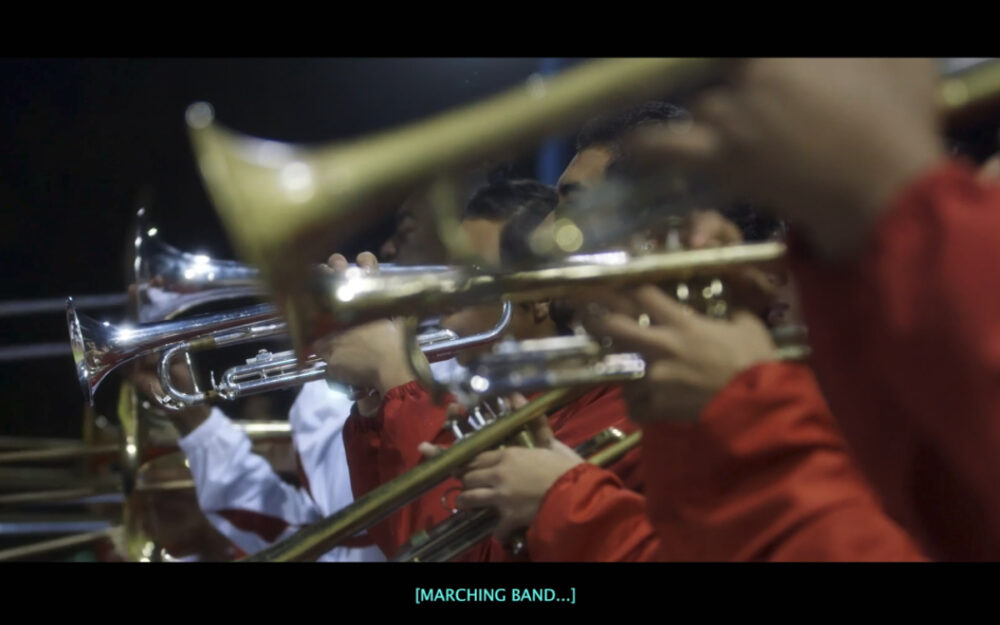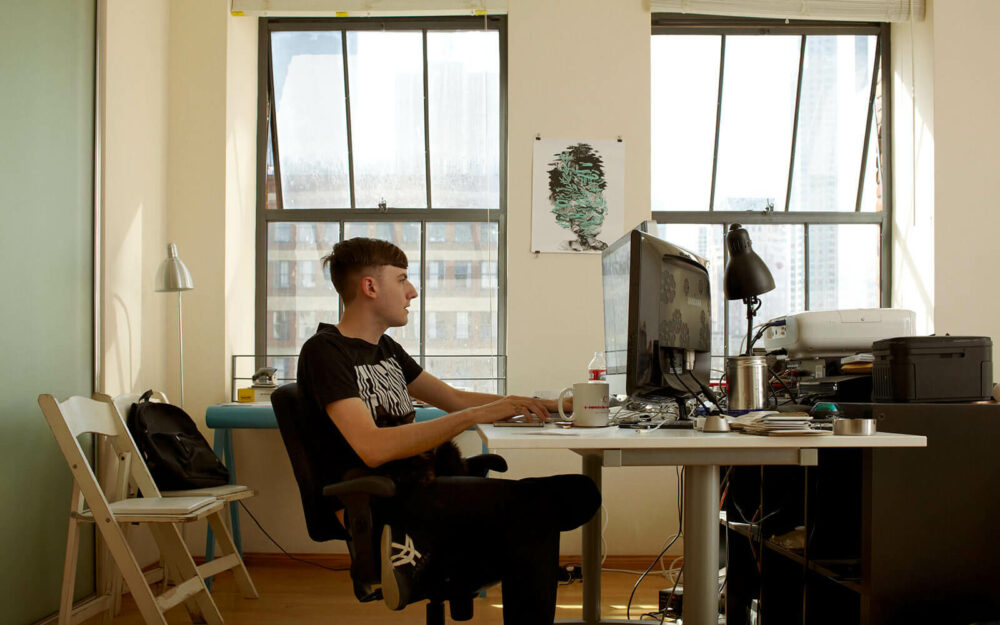Yoko Ono Spreads Planetary Love on Earth Day
In celebration of Earth Day, Yoko Ono declares “I LOVE YOU EARTH” across billboards in London, Liverpool, Glasgow, and other cities in the UK. The message, set in stark black and white, is a call for climate action and a nod to Ono’s eponymous 1985 song and text piece, which includes the lyrics: “I love you, earth (…) I know I never said it to you / But I wanna say it now.” The two-week action is part of Serpentine Galleries’ multi-year project “Back to Earth,” which has 60+ artists respond to the environmental crisis.

CGI Provocateur David OReilly Doesn’t Buy Your Virtue Signalling
“Changing the colour of your Twitter picture is the digital equivalent of wearing a Che Guevara T-shirt. You’re not an agent of change, you’re just drawing attention to it.”
David OReilly—LOL All the Way to the Bank?
“Die With Me” Has Changed Dries Depoorter’s Life
“If I can be a bit emotional: Die With Me has changed my life.”
MMOMA Show Parses Superfluidity in a Moment of Crisis
An output of curators Peter Kirn and Anna Titovets plus partner Kotä, “Experimental Music and Art” Expo opens at the Moscow Museum of Modern Art (MMOMA). !Mediengruppe Bitnik, Sara Culmann, Mikhail Myasoedov, and other participants’ expertise spans hard sciences, installation, and sound. The thematic: a search for new forms in a moment of crisis, as evidenced by Byrke Lou’s postdigital materials research (image: CODE_xi {isbtm}•{~} 2014-).

Crypto Feudalism Turns Artists into Recruiters, Kimberly Parker Says
“These NFT sites are victim factories, and it’s not just naïve tech investors that are the victims—it’s artists since every artist selling work on these platforms is now an Ether investor too.”
Artists Drop NFTs in “The FEN” to Encourage Transition to Greener Blockchains
An effort to encourage NFT artists and collectors to transition to greener blockchains, curator Juliette Bibasse and visual artist Joanie Lemercier kick off a series of coordinated cryptoart releases on Hic et Nunc, an indie marketplace on the energy-efficient Tezos chain. Named “The FEN” (image: generative type by Mike Brondbjerg), the campaign launches with pieces by Dave Whyte, Zai Divecha, and Auriea Harvey. Drops from more than 30 other artists will follow in the coming weeks.
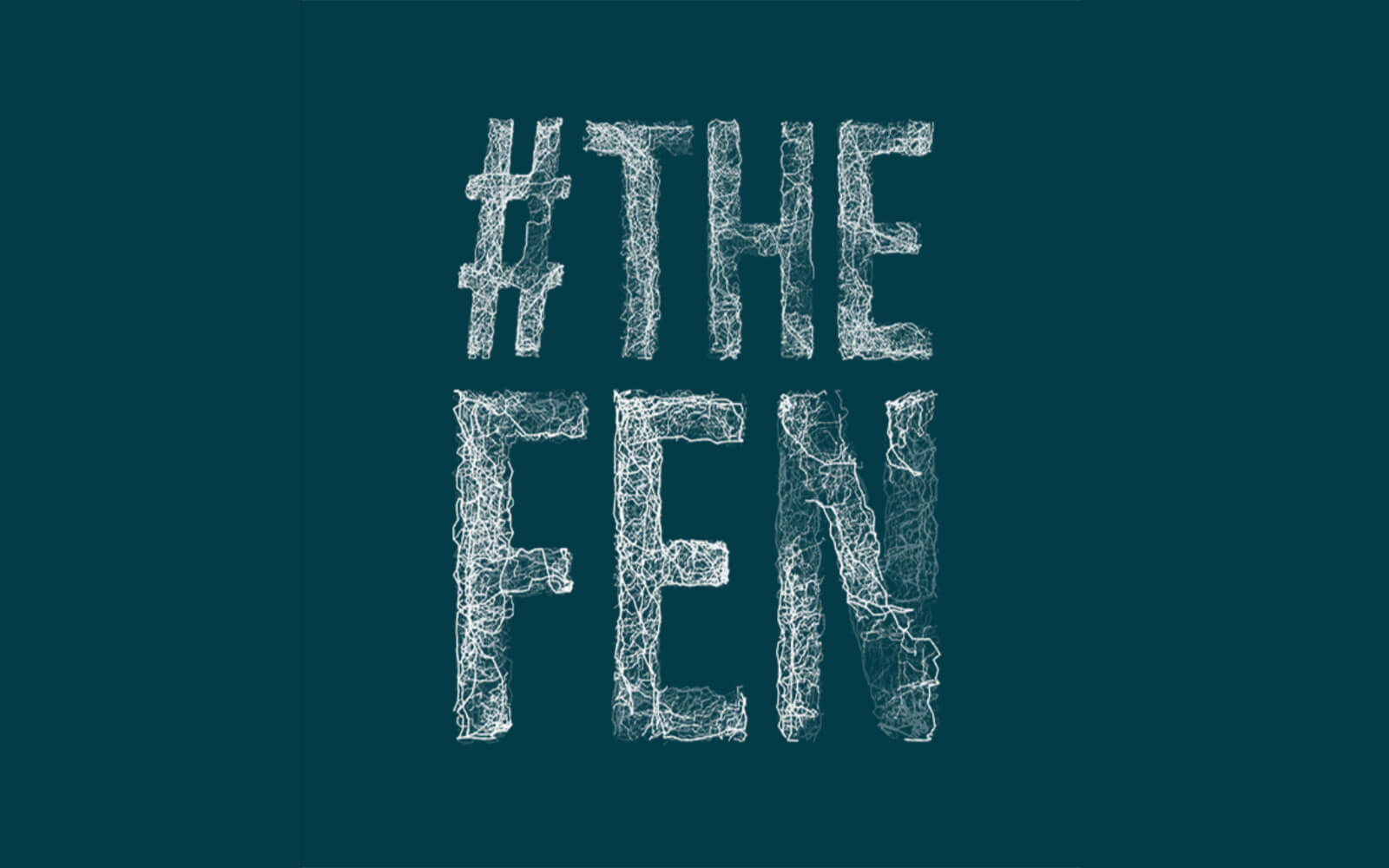
New Lucy Raven Film Installation Captures Industrial Resource Extraction and Material Transformations in the Western United States
The Chelsea branch of Dia Art Foundation reopens with newly commissioned works by American artist Lucy Raven. Two kinetic light sculptures, Casters X-2 and X-3 (2021), surveil the gallery with moving beams, while the immersive film installation Ready Mix (2021, image) documents the workings of an Idaho concrete plant. Capturing the churn of mineral aggregates and cement binders with optical and durational experiments, the 45-minute film expands on Raven’s preoccupation with resource extraction in the American West.
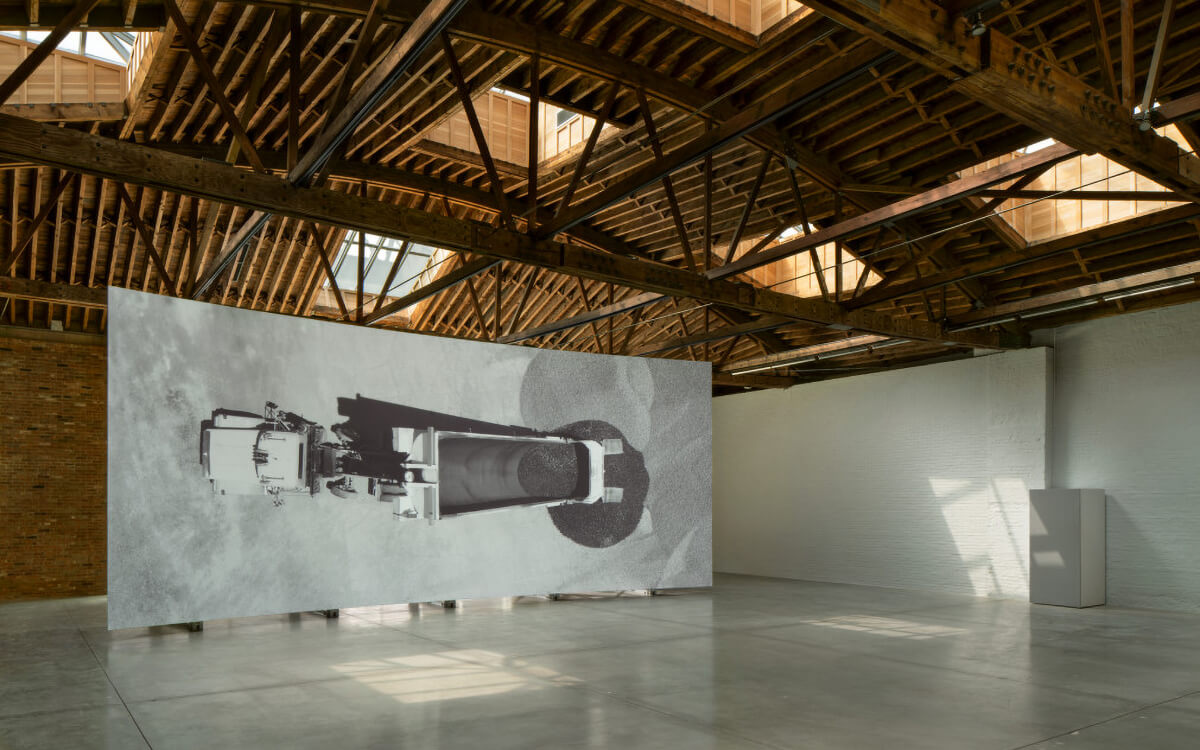
Jane McAlevey on Amazon’s Anti-Union PsyOps
“The employer in an anti-union campaign is running a psychological terror operation, so that no worker in that facility ever considers the question of a union again. Amazon was sending a message to its workers across the United States.”
Does Domnitch & Gelfand’s “Time Synthesizer” Really Exist?
“Last year, we created a new artwork Time Synthesizer. It was seen by almost no one. It doesn’t feel that it fully exists yet.”
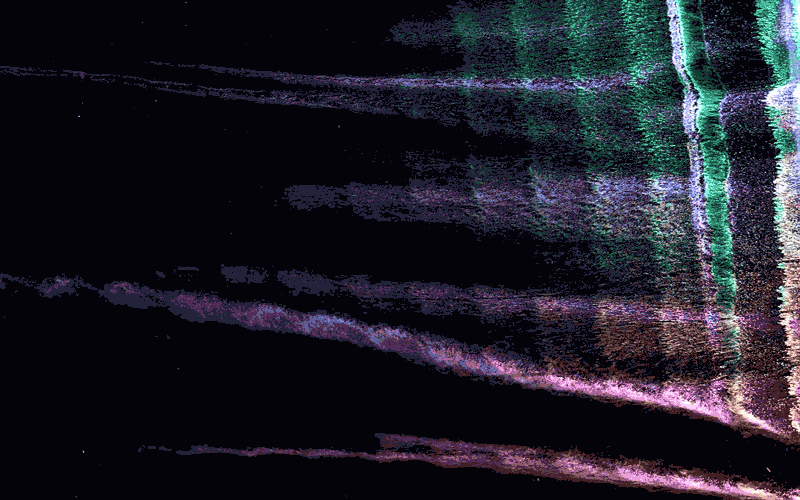
Beth Jochim Considers Failure and Resolution in Major Glitch Art Survey
“The aesthetic of the glitch reveals the intrinsic mechanisms of a digital environment—a fleeting moment in which the interruption of fluidity becomes a symbol of new awareness and possibility of choice.”
Mario Santamaría’s ‘Rabbit Hole’ Network Measures Materiality of Digital Time
Mario Santamaría’s installation Unfixed Infrastructures and Rabbit Holes (2020) opens at Aksioma, Ljubljana, articulating invisible data flows. The Spanish artist programmed a “rabbit hole” network to cycle signals through different geolocations, seeking the maximum possible route allowed by network protocols. The delay—a measure of the materiality of digital time—is visualised by two screens video-streaming a Foucault pendulum, one connected to the gallery WiFi, the other to the “rabbit hole” network.
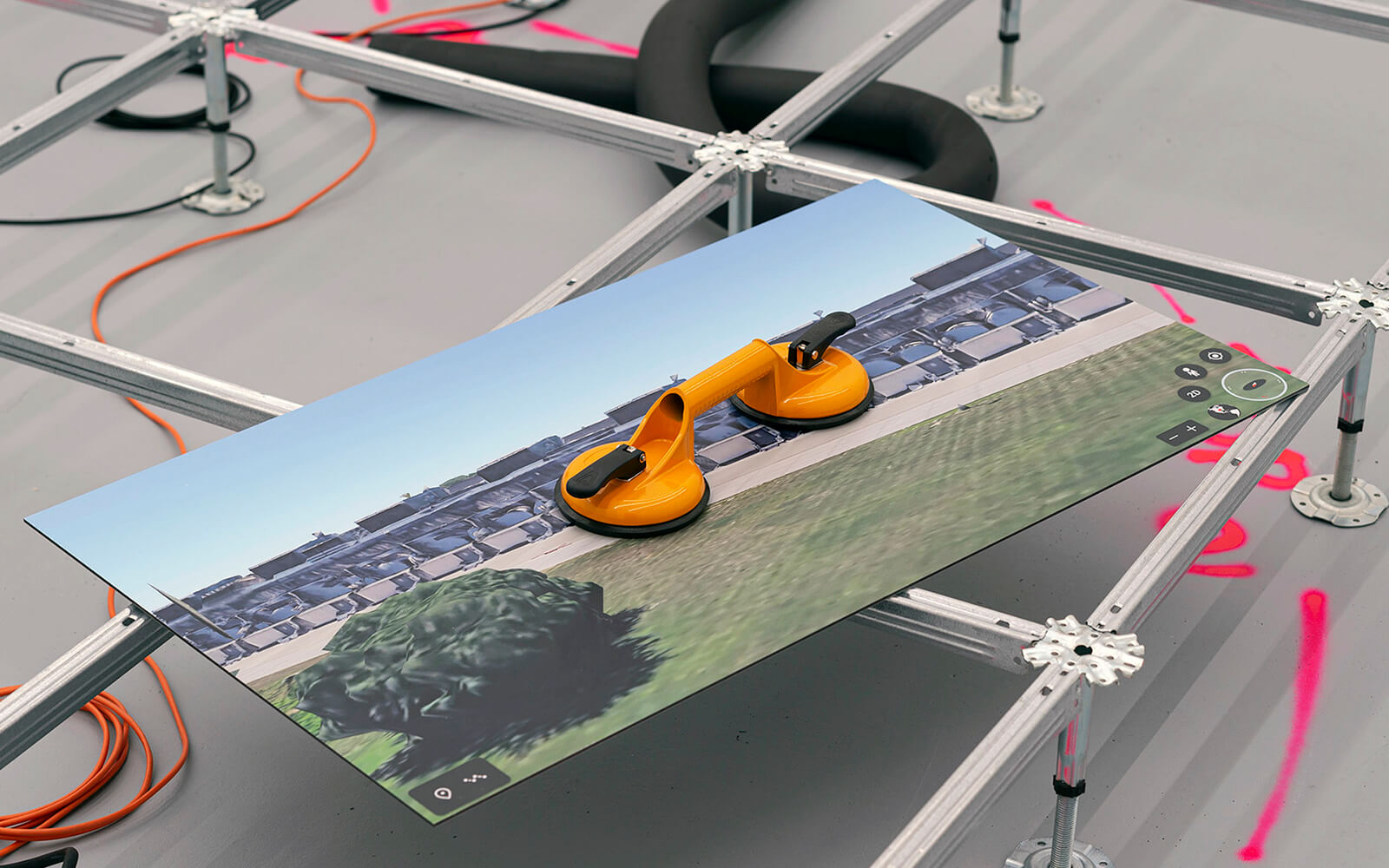
Os Keyes in Support of Banning Algorithmic Detection of Gender and Sexual Orientation
“We already live in a society which is very heavily gendered and very visually gendered. What these technologies are doing is making those decisions a lot more efficient, a lot more automatic, and a lot more difficult to challenge.”
Scroll Back in Time With DAM’s Digital Art Chronology
From “Cybernetic Serendipity” (1968), to the first Ars Electronica (1979), to SFMOMA’s “010101: Art in Technological Times” (2001)—Wolf Lieser’s Digital Art Museum website adds a neat event timeline that lets visitors scroll through a genre chronology. The feature is one of several additions (see the essay section) since the site’s major overhaul in 2020. Launched in 2000, the online museum (that precedes Lieser’s eponymous Berlin gallery) is one of the first internet resources on the history of digital art.
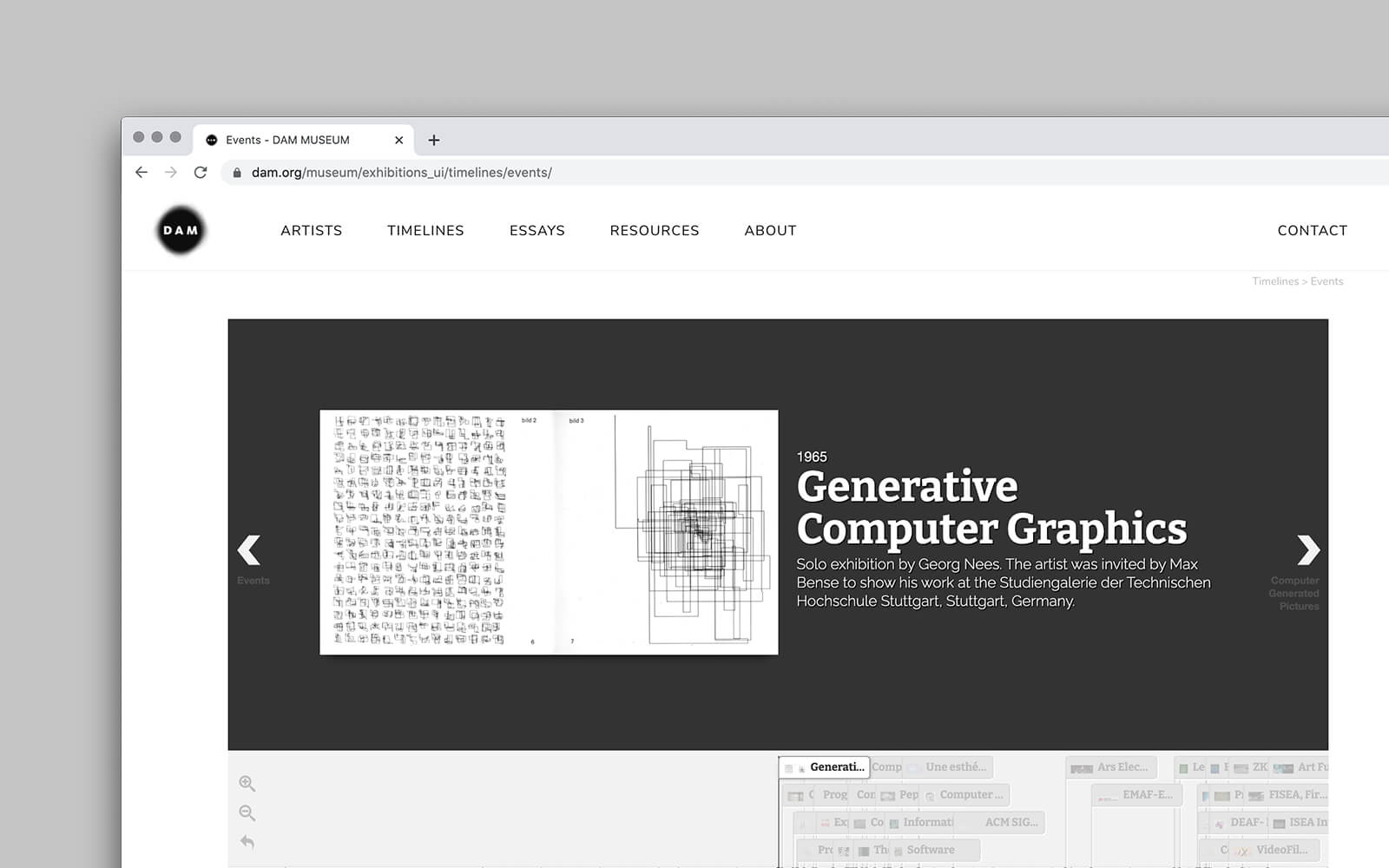
Stephen Wolfram May Have Found the ‘Machine Code’ of the Universe
“It seems as if we’ve successfully found a structure for the ‘machine code’ of the universe—the lowest-level processes from which all the richness of physics and everything else emerges.”
Artist Sam Durant Brings the Drone War home to America
“Unmanned aircraft were seen as popular because U.S. soldiers didn’t have to go to the battlefield. But what about the casualties in the countries that were attacked by our drones?“ American artist Sam Durant asks in a wide-ranging interview about his new public artwork Untitled (drone). “The idea was to bring this conversation home to America.” Originally conceived in 2016, Durant’s life-sized fiberglass sculpture of a Predator drone will be installed atop a 25-foot-tall pole on New York’s High Line in May.
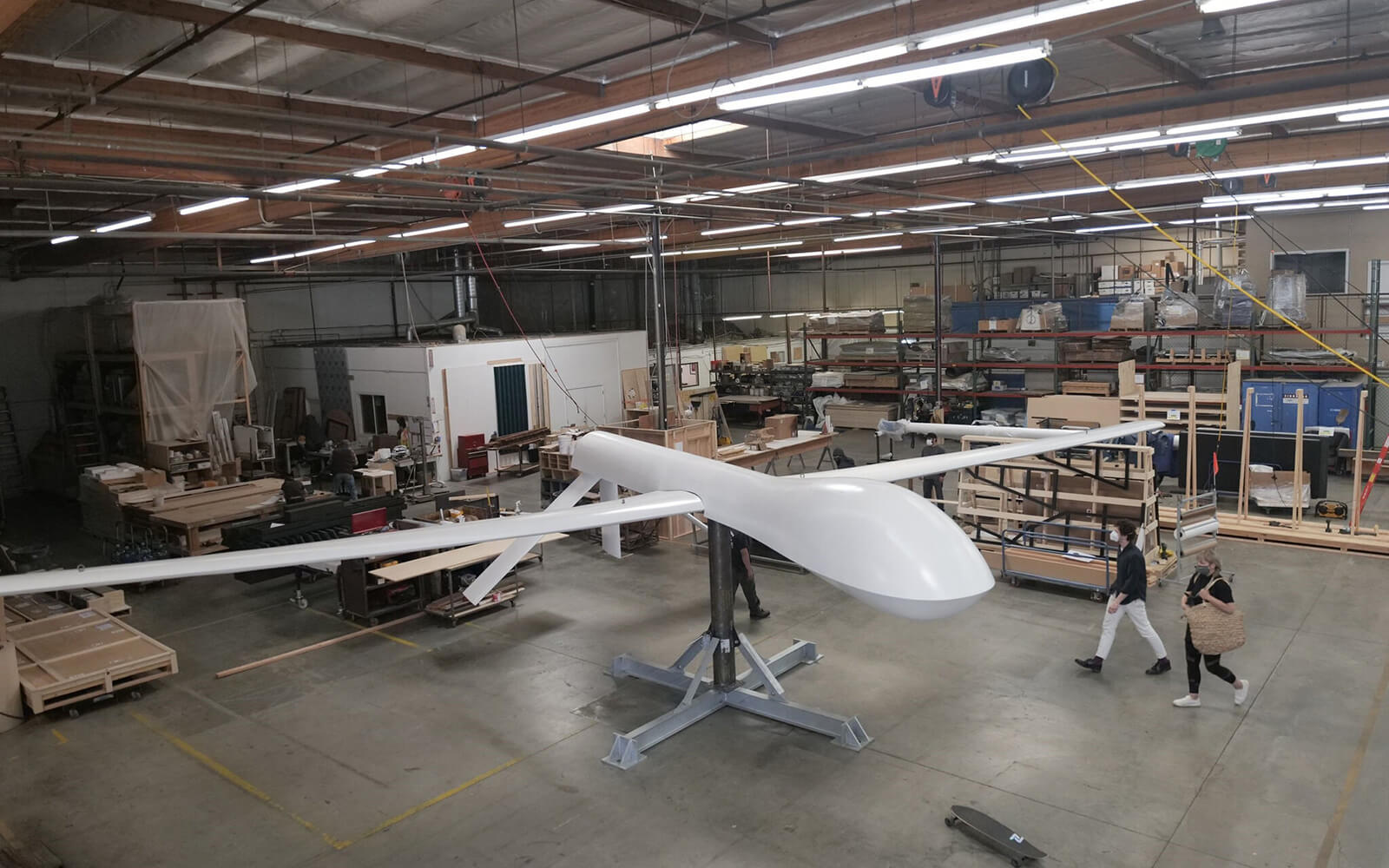
In a Genre Dominated By Men, Land Artist Nancy Holt Made Sure Her Voice Was Here To Stay
“When invited to make temporary pieces for exhibitions, she would sculpt them so well they’d be impossible to dismantle. And then she’d refuse to gift them to the institution.”
Everest Pipkin’s Tiny Tools Directory Enables Making Outside of Closed Production Ecosystems and Walled Software Gardens
Software artist Everest Pipkin launches an exhaustive directory of 600+ open-source tools for building games, websites, and interactive projects. Supported by the Frank-Ratchye STUDIO for Creative Inquiry and the Clinic for Open Source Arts (COSA), Pipkin’s list includes anything from quirky single-purpose utilities (ASCII PAINT) to major applications (Blender). “The goal is to enable making entirely outside of closed production ecosystems or walled software gardens,” writes Pipkin.
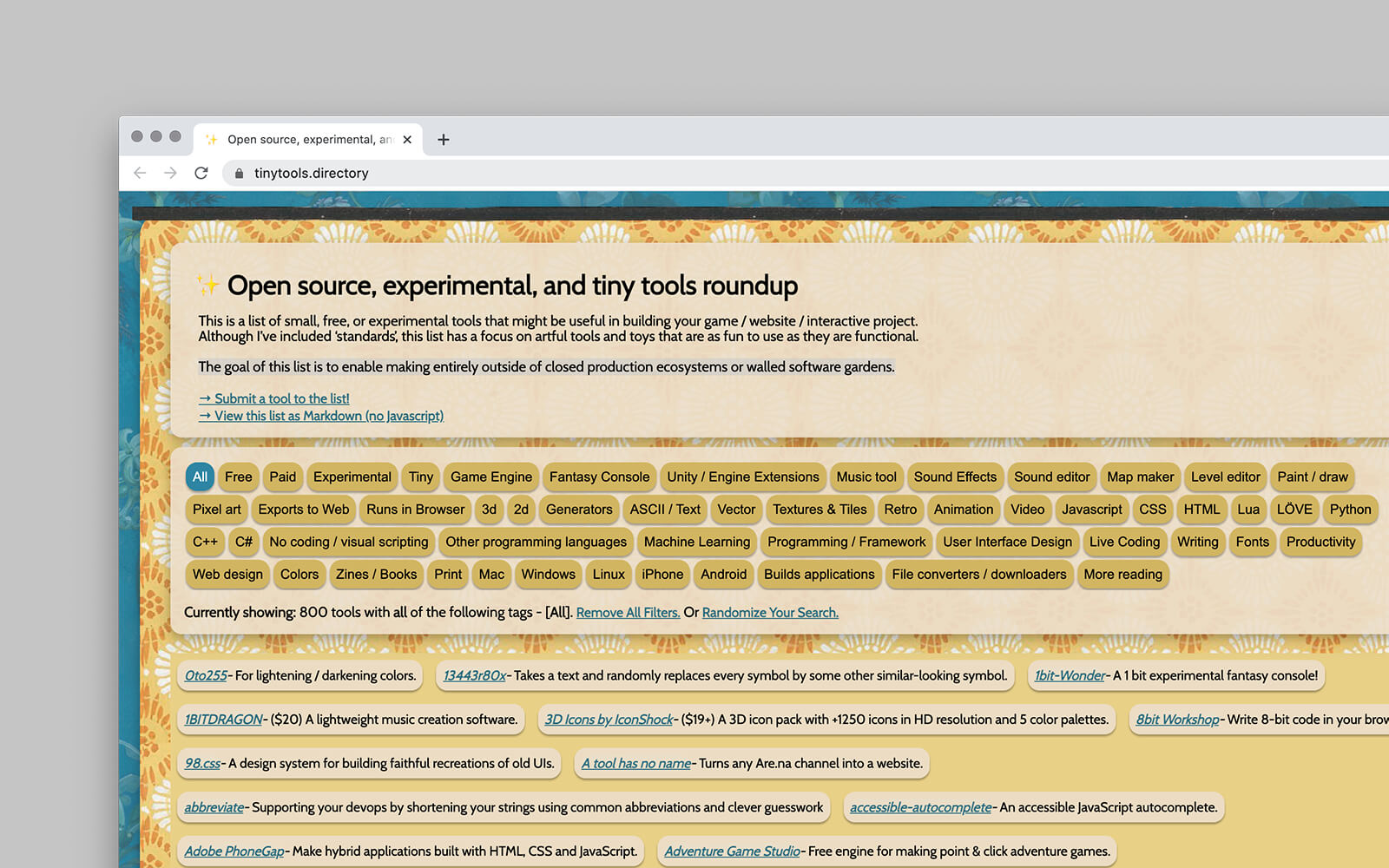
Lucy Raven Considers Concrete Cinema in New Film and Solo Exhibition
“I think it’s something about concrete’s heavy dumbness as a material that needs a form to be of use. There is musique concrète and concrete poetry. Why not concrete cinema, then?”
Peter Kirn Welcomes NVIDIA’s AI and GPU-Powered Omniverse
“I for one enjoy watching Mercedes Benz simulate the Autobahn. It’s the Kraftwerk in me.”
Out Now: Rewired #3 – (Anti)Trust
Rewired #3
(Anti)Trust
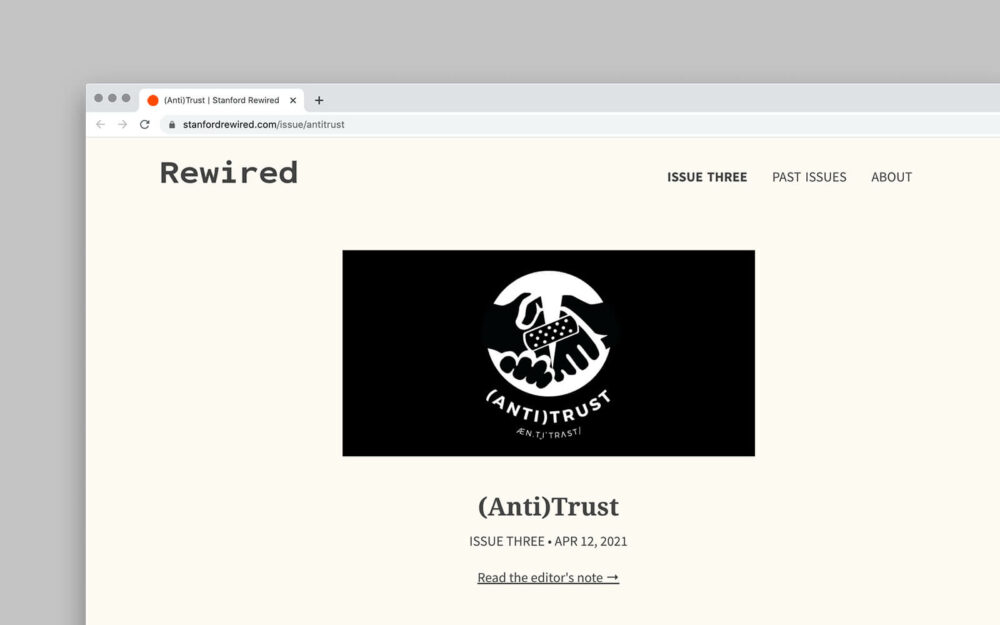
Wendy Liu on San Francisco’s Jarring Mix of Tents and Billionaires
“That’s never felt good to me, having to live in San Francisco and see the physical manifestation of capitalism’s inequality engine in geographical form. And today, with the pandemic and the economic crisis, the number of tents has exploded around here.”
Out Now: Back Office 4
Back Office 4
Go With the Flow
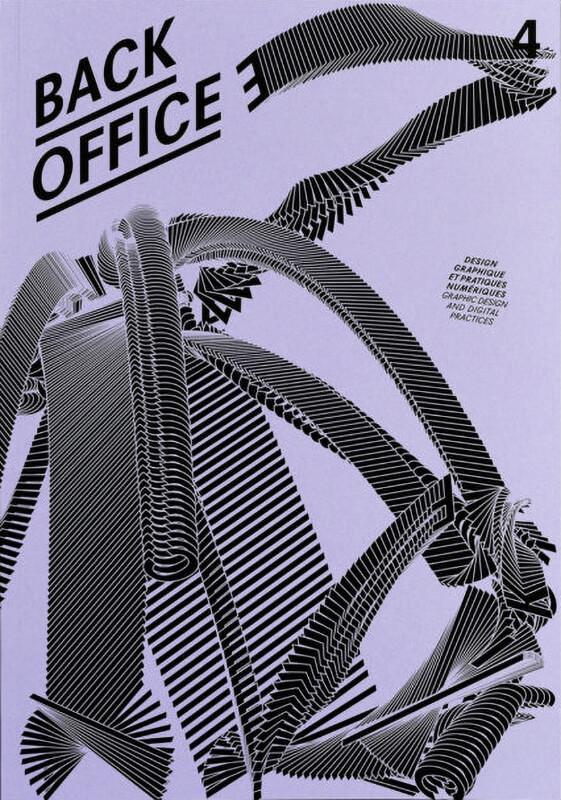
Matthew Plummer-Fernández Hides NFT Commentary Inside Minted JPEG
“Using steganography, I have hidden the whole essay inside the JPEG. Yes, you’re looking at a conceptual artwork that is currently explaining itself to you.”
Ben Rubin & Brian House Sonify Deep History at Brooklyn Botanical Gardens
Artists Ben Rubin and Brian House’s “Terminal Moraine” opens at Brooklyn Botanical Gardens. Taking a meta-historical approach, its lone eponymous work models the local impact of the Laurentide ice sheet. Approximately 18,000 years ago, the 600 metre wall of ice flowed down the Hudson Valley and shaped the landscape—Rubin and House simulate the glacial retreat and forest growth that followed. In their sonification “cells expand and branch while crystalline structures gradually break apart,” helping listeners contemplate the deep time of history.

British Festival Wants to Abolish Normal Devices
“This is a time not only to ask how to resurface differently, but to ask what foundations to urgently sink—to recognise that it’s not enough to abandon, but that we have a role to abolish normal devices.”
Yuri Suzuki’s Horns Create Music for Airports
A collaboration between sound designer Yuri Suzuki and musical artist and composer Miyu Hosoi, Crowd Cloud is unveiled at Haneda Airport, Japan. The site-specific installation distils the vowels of the Japanese language, sung by Hosoi, creating a unique composition that emanates from a choir of dozens of standing horns that converse with each other like people. Crowd Cloud is part of the Paola Antonelli-curated “Culture Gate” exhibition that sees artists offer fresh interpretations of Japan’s diverse culture in airports across the country.
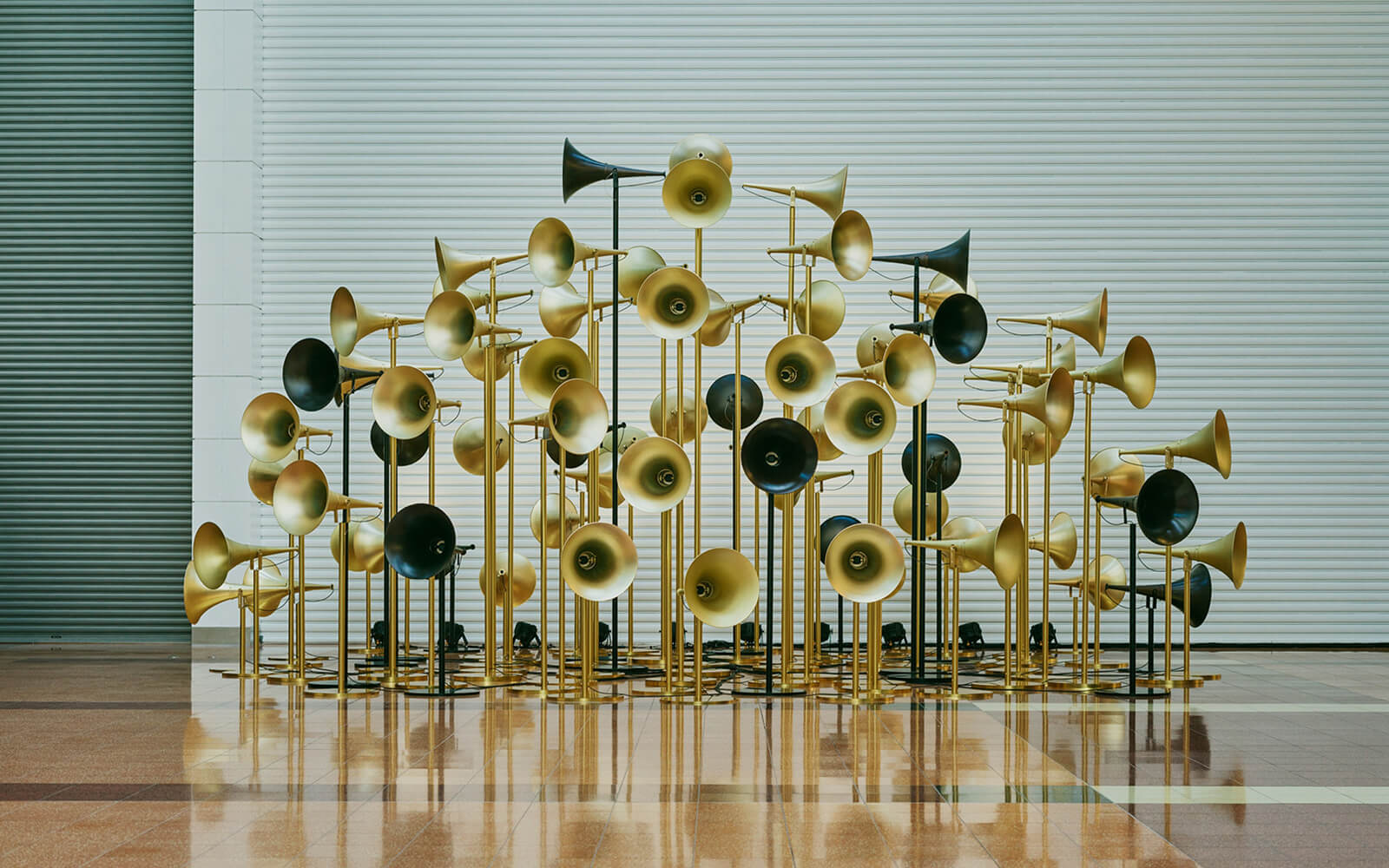
Nora N. Khan on the Myths, Confusion, and Obfuscation Ever Unfolding Around Computation
“Myths unfold in real-time alongside critical ‘reveals,’ unveilings, and clarifications. Cultural gaps between the humanities and the sciences expand even as artists and interdisciplinary practitioners work to collapse them.”
Charlotte Johannesson’s Political Tapestries Weave Together Craft and Technology
“Take Me to Another World,” the first-ever Charlotte Johannesson retrospective, opens at Museo Nacional Centro de Arte Reina Sofía, Madrid. Named after a computer graphic the Swedish artist created in the 1980s, the survey traces 60 years of Johannesson’s image-making between craft and technology. A textile artist who turned to computer programming (in 1978, the autodidact swapped her loom for an Apple II Plus), Johannesson’s political tapestries are inwoven with 1960s counterculture, punk, and feminism.
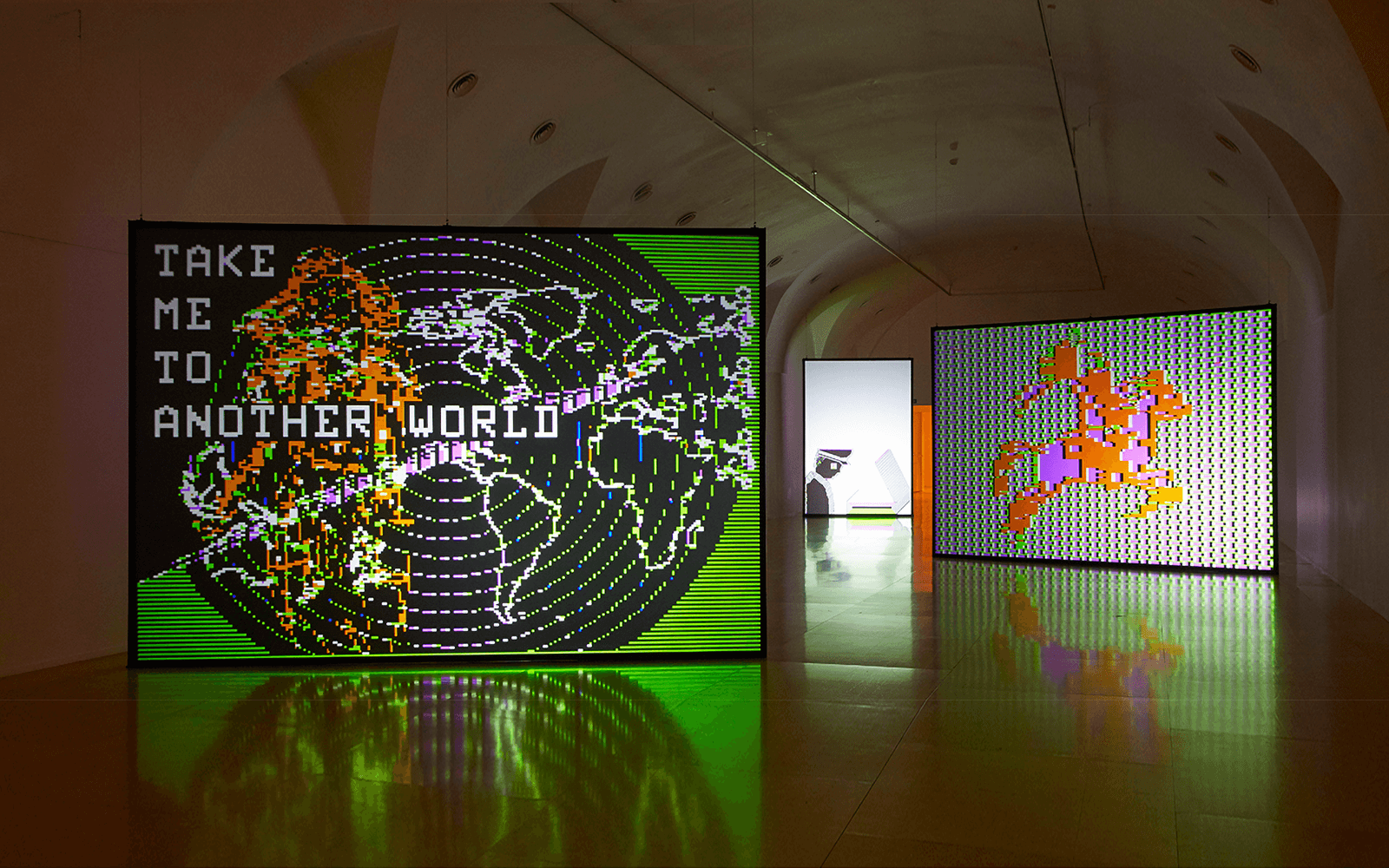
Ben Grosser on Why He Creates Unique Digital Objects That Can Only Be Viewed Once
“I see artists erasing their own URLs from Twitter bios and replacing them with links to cryptoart platform pages, and turning their Twitter feeds into very noisy adverts for platforms, talking about bids, drops, sales.”
Carla Gannis’ “Garden of Emoji Delights” … Delights
A reimagination of Hieronymus Bosch’s iconic triptych for the digital age, Carla Gannis’ The Garden of Emoji Delights opens at Stockholm’s Fotografiska. In her 2014 collage, the American artist explores how Bosch’s visual world from 500 years ago matches our emoji dictionary, circa now. “There is humour, darkness, and absurdity,” state the curators. “Earthly, cosmological, and technological conditions are combined,” revealing ideologies and social constructs that have remained unchanged for centuries.
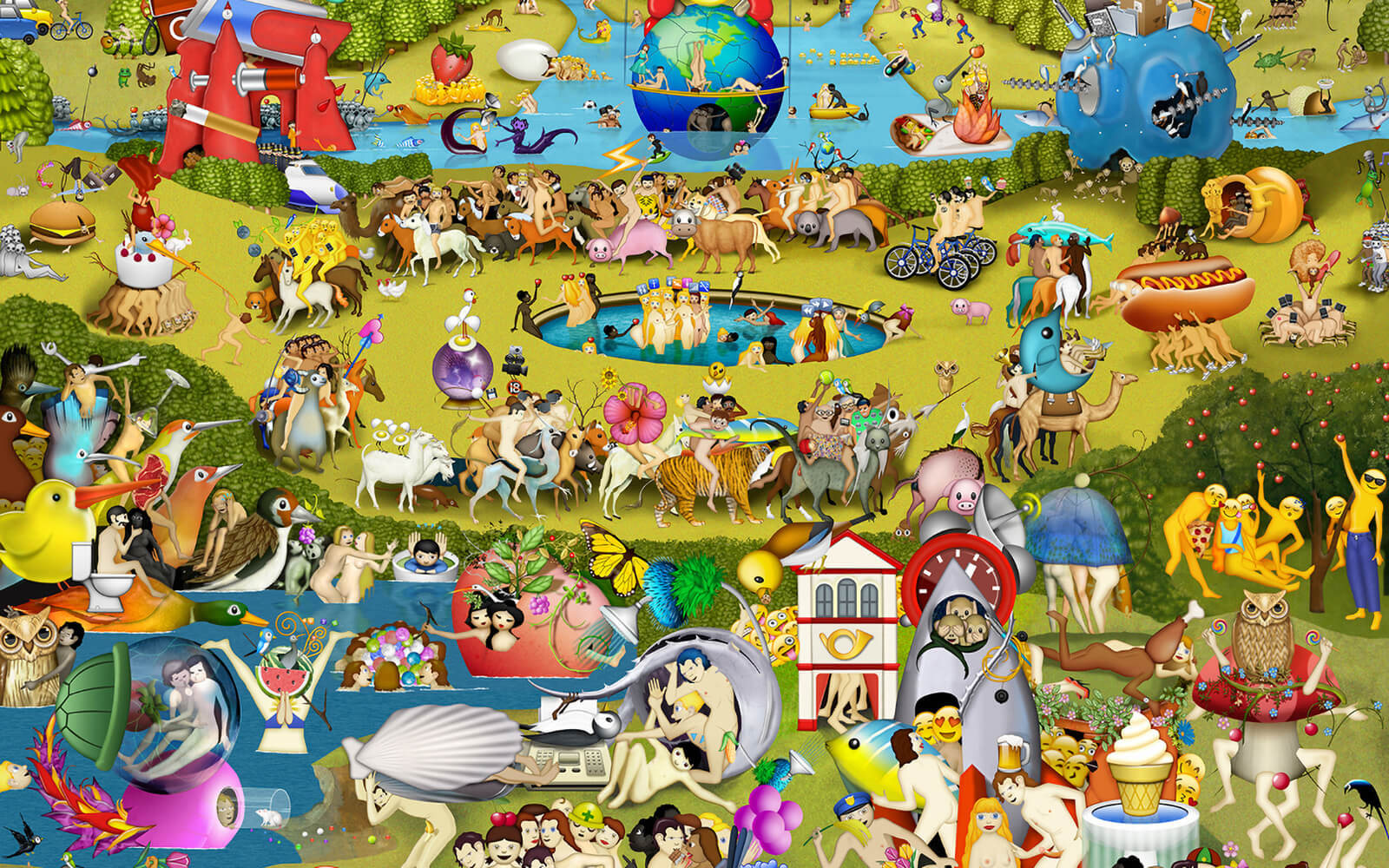
How Gene Youngblood Popularized the Phrase “Expanded Cinema”
“Stan VanDerBeek coined the phrase ‘expanded cinema.’ But it was Gene Youngblood who put it on the cover of a book, filled it with rocket fuel, and sent it buzzing through the late-1960s art world like a heat-seeking missile.”
Brigitte Kowanz and Troika Encode Perceptual Poetry in Juxtaposition
“Poetics of reality (encoded)” opens at max goelitz gallery, Munich, putting works by Austrian artist Brigitte Kowanz and UK-based collective Troika in juxtaposition. “Both question different forms of representation via a subversive examination of abstraction and new pictorial formulas,” notes curator Madeleine Freund. What unites them is a shared interest in human perception and the mediation of information. “Through language, codes, and algorithms they critically examine contemporary issues, from climate policy to digitization.”
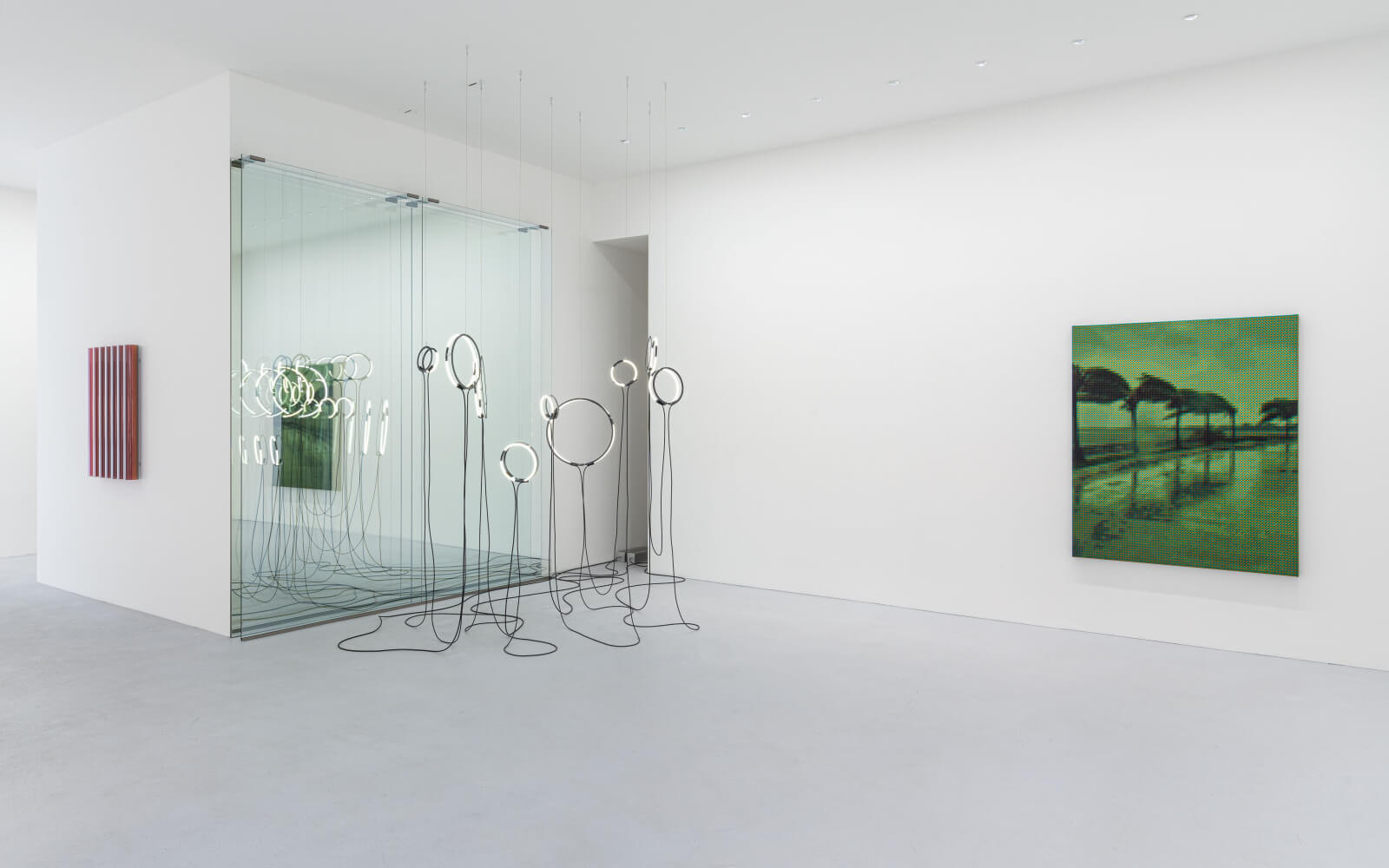
Katrina Sluis Frames “CGI Torch Bearer” Alan Warburton
“I like to imagine Alan as kind of a visual effects magician, who can bend the light of the CGI torch and shine it back on itself.”
Kate Crawford Maps “Atlas of AI”
Kate Crawford
Atlas of AI
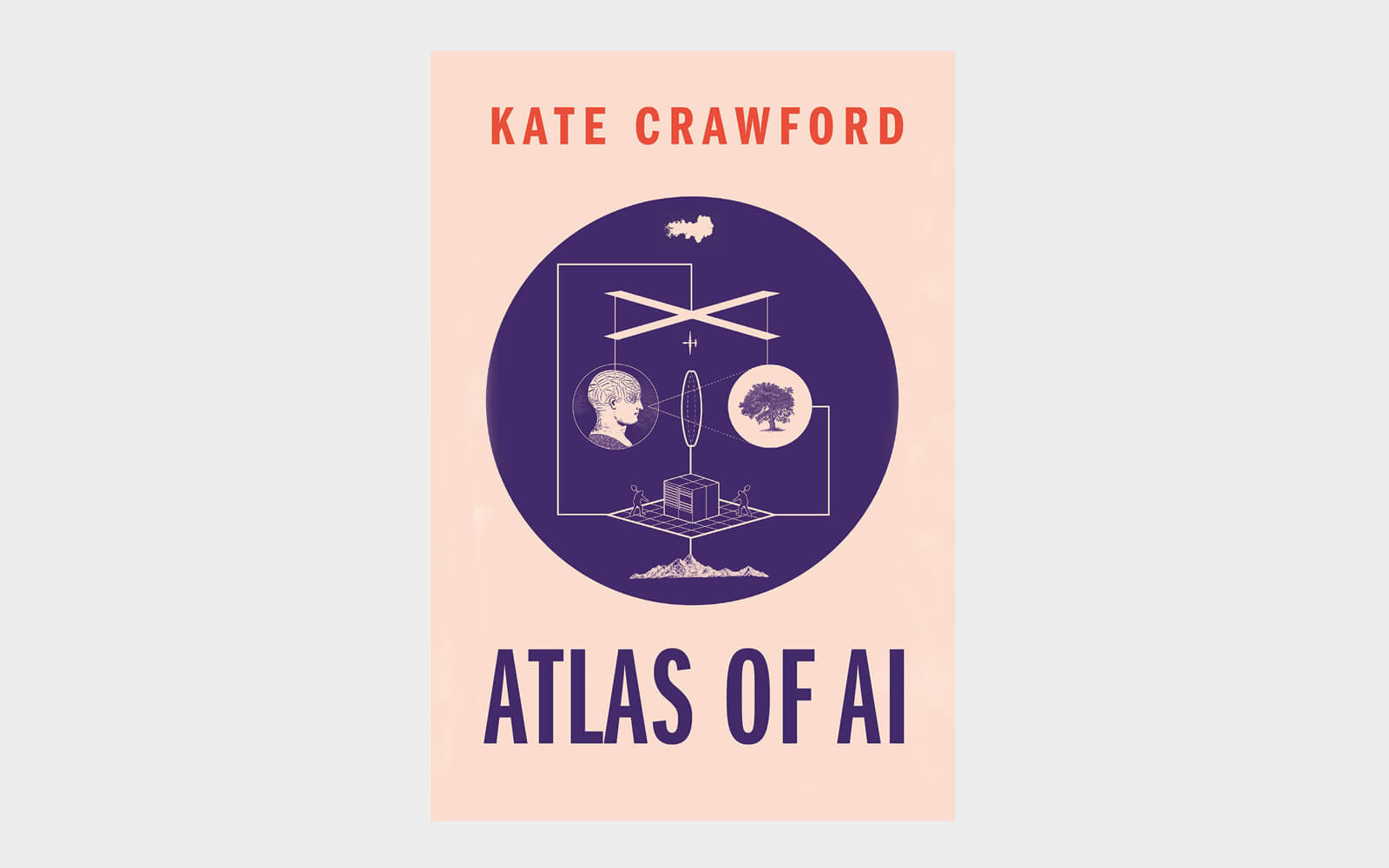
Facebook Congratulates Self for Stamping Out Troll Farm
“This is an ongoing pattern we have seen where we see threat actors continuing to try to use these techniques to manipulate public debates on our platforms, and off our platform.”
In Memory: Gene Youngblood (1942–2021)
Gene Youngblood
(1942–2021)
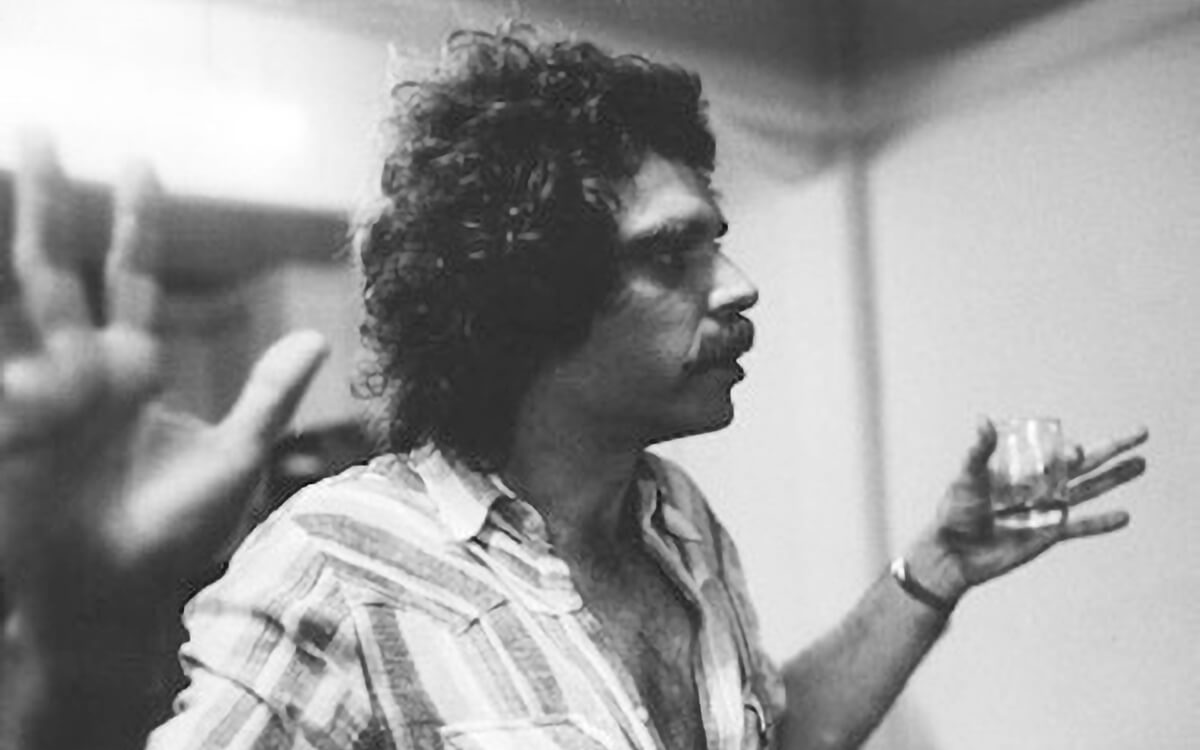
Not Unlike Pulling Excalibur from the Stone—Craig Mod on the “Healing Powers” of Writing JavaScript
“You feel like an alchemist. And you are. You type esoteric words—near gibberish—into a line-by-line text interface, and with a rush not unlike pulling Excalibur from the stone you’ve just scaffolded a simple application that can instantly be accessed worldwide.”
[Triumphant Horns] for “Activating Captions,” an Online Exhibition Exploring Closed Captioning
“Activating Captions,” an online exhibition exploring the expressive potential of closed captioning launches. Curated by Christine Sun Kim and Niels Van Tomme for the ARGOS Centre for Audiovisual Arts in Brussels, it brings together Carolyn Lazard, Alison O’Daniel (image: The Tuba Thieves, 2013), Alex Dolores Salerno, and others to “highlight and undo [captioning’s] shortcomings and inadequacies” while raising related questions of equity and access.
